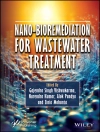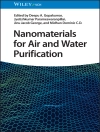Very small particles are able to show astonishing properties. For example, gold atoms can be combined like strings of pearls, while nanoparticles can form one-, two- and three-dimensional layers. These assemblies can be used, for instance, as semiconductors, but other electronic as well as optical properties are possible.
An introduction to the booming field of ‘nanoworld’ or ‘nanoscience’, from fundamental principles to their use in novel applications.
With its clear structure and comprehensive coverage, backed by numerous examples from recent literature, this is a prime reference for chemists and materials scientists working with and developing nanoparticle systems.
A bestselling title in its second edition. A must-have reference for chemists and materials scientists.
Tabela de Conteúdo
Introduction
Quantum Dots
Synthesis and Characterizations of II-VI Nanoparticles
Synthesis and Characteriazation of Ib-VI Nanoparticles
Synthesis and Characterization of Metal Nanoparticles
Synthesis and Characterization of Magnetic Nanoparticles
Organization of Semiconductor Nanoparticles
Organization of Metal Nanoparticles
Electrical Properties of Metal Nanoparticles
Synthesis, Properties and Applications of Biomaterial-Nanoparticle Hybrid Systems
Synthesis, Properties and Assembly of Complex Nanocrystal Structures
Controlling Uptake and Intercellular Fate of Surface Modified Gold Nanoparticles
Sobre o autor
Günter Schmid studied chemistry at the University of Munich, did his habilitation in Marburg before he became Professor in Essen. His research focus on the border between chemistry and physics, especially on clusters, colloids and nanoscience. He is author and editor of bestselling books and member in the editorial teams Small and Advanced Functional Materials. In 2003 he got the prestigious Wilhelm-Klemm award of the German Chemical Society.












